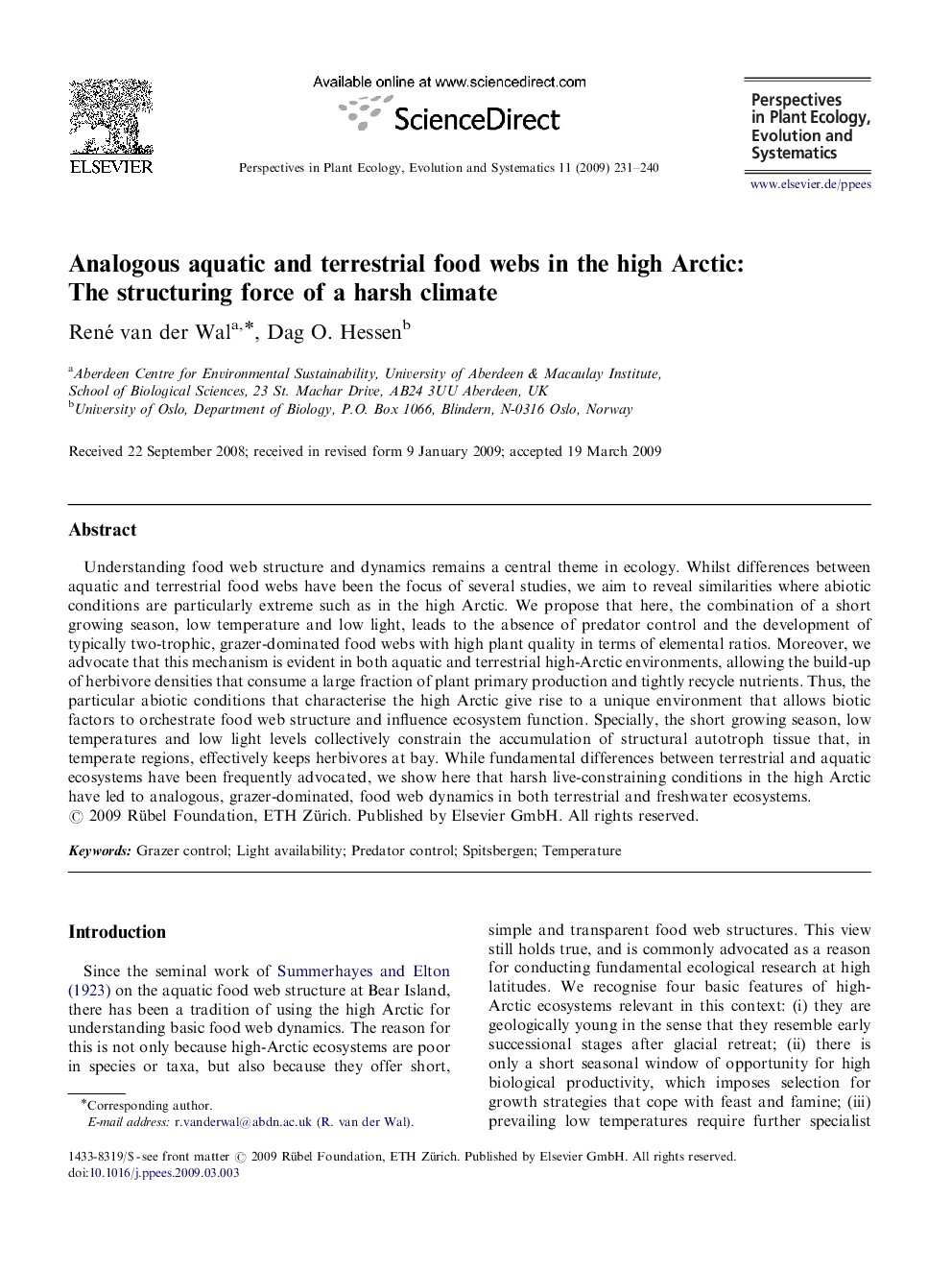| Article ID | Journal | Published Year | Pages | File Type |
|---|---|---|---|---|
| 4401135 | Perspectives in Plant Ecology, Evolution and Systematics | 2009 | 10 Pages |
Understanding food web structure and dynamics remains a central theme in ecology. Whilst differences between aquatic and terrestrial food webs have been the focus of several studies, we aim to reveal similarities where abiotic conditions are particularly extreme such as in the high Arctic. We propose that here, the combination of a short growing season, low temperature and low light, leads to the absence of predator control and the development of typically two-trophic, grazer-dominated food webs with high plant quality in terms of elemental ratios. Moreover, we advocate that this mechanism is evident in both aquatic and terrestrial high-Arctic environments, allowing the build-up of herbivore densities that consume a large fraction of plant primary production and tightly recycle nutrients. Thus, the particular abiotic conditions that characterise the high Arctic give rise to a unique environment that allows biotic factors to orchestrate food web structure and influence ecosystem function. Specially, the short growing season, low temperatures and low light levels collectively constrain the accumulation of structural autotroph tissue that, in temperate regions, effectively keeps herbivores at bay. While fundamental differences between terrestrial and aquatic ecosystems have been frequently advocated, we show here that harsh live-constraining conditions in the high Arctic have led to analogous, grazer-dominated, food web dynamics in both terrestrial and freshwater ecosystems.
